Beyond the Transaction: Understanding the Nuances of B2B Technology Acquisition

Navigating the intricate landscape of B2B technology acquisition requires more than just making a purchase; it demands a strategic understanding of buying, purchasing, procuring, and sourcing.
About a six-minute read
The terms "buy," "purchase," "procure," and "source" are often used interchangeably in the fast-paced world of business-to-business (B2B) technology. While they all relate to obtaining goods and services, they represent distinct phases and levels of strategic engagement within an organization. Understanding these nuances isn't just about semantics; it's about fostering a more precise mindset that drives strategic decision-making and ultimately leads to better business outcomes.
This article will break down each term, exploring their individual definitions, their role in the broader acquisition lifecycle, and why distinguishing between them is crucial for businesses of all sizes, from agile startups to established mid-sized enterprises and burgeoning small businesses.
The Basics: Buying & Purchasing
At the most fundamental level, buying refers to the simple act of acquiring something, usually in exchange for money. It's the point of sale type of transaction, often singular and without much formality. Imagine you're in the middle of planting a tree in the yard, the wooden handle of that cheap old shovel finally broke, and you immediately go to buy a new one, perhaps with a more durable fiberglass handle this time. This perfectly illustrates a quick, low-value, one-off acquisition to meet an immediate, unforeseen need. It's tactical, immediate, and typically lacks a comprehensive underlying strategy.
Moving a step up, purchasing implies a more formal, documented, and often recurring act of acquiring a product or service. While still tactical, it involves a process: creating a purchase order, placing an order, receiving then paying an invoice, and recording the transaction for accounting purposes. For a homeowner, this might involve finding and acquiring the right tree for a specific spot in your yard. You research varieties, visit a few nurseries, compare prices, choose one that fits your vision, pay for it, and get a receipt and warranty. It's a single, yet more considered transaction with documentation.
Both buying and purchasing, while vital for day-to-day operations, primarily focus on the transactional aspect of acquisition. They address immediate and near-term needs and involve a limited scope of strategic planning.The Strategy: Procuring
When we speak of procurement, we enter the realm of strategy. Procurement is an end-to-end process that encompasses the entire lifecycle of acquiring goods and services. It goes far beyond the simple transaction, and fortunately or unfortunately, often starts with formal requests like a Request for Information (RFIs), Request for Quotation (RFQs), and/or Request for Proposal (RFPs). For our homeowner, this expands to a larger landscaping project for your yard – say, redesigning a specific section around your new tree and hardscaping a new patio or firepit nearby. This involves a holistic approach that includes:
Defining Needs: Clearly identifying what is required, why it's needed, and how it aligns with business objectives. This might involve figuring out what plants, materials (like soil, mulch, edging), and perhaps services (like professional installation or irrigation setup) you need for this specific section of your yard.
Searching for Suppliers: Identifying potential vendors capable of meeting those needs, assessing their capabilities, and understanding the market landscape. You might get quotes from multiple nurseries, landscaping companies, and irrigation specialists.
Supplier Selection & Negotiation: Evaluating proposals, negotiating terms, prices, and service level agreements (SLAs), and ultimately choosing the best-fit supplier. This could mean comparing bids for the overall project, negotiating bulk discounts for materials, and agreeing on delivery and installation schedules.
Contract Management: Formalizing the agreement with a legally binding contract that outlines responsibilities, expectations, and performance metrics.
Order Management & Delivery: Overseeing the fulfillment process, ensuring timely delivery, and managing logistics.
Invoice & Payment Processing: Handling the financial aspects, verifying invoices against goods received, and processing payments.
Performance Monitoring & Relationship Management: Continuously evaluating supplier performance against contract terms and fostering a positive working relationship, ensuring the landscaping project meets your vision.
The core objective of procuring is not just to obtain an item, but to secure the best possible value, optimize efficiency, manage costs, and mitigate risks. For mid-sized businesses with lean IT teams, effective procurement is paramount. It allows them to maximize every dollar, leverage their buying power, and ensure that technology investments truly contribute to their strategic goals without overstretching limited resources. It transforms reactive spending into proactive investment.
The Big Picture: Sourcing
At the pinnacle of the acquisition hierarchy lies sourcing. This is the highest-level, long-term strategic process that focuses on identifying, evaluating, and engaging with qualified, reliable suppliers or partners to fulfill an organization's long-term needs. While procurement deals with the process of acquiring, sourcing deals with who you acquire from, and why. For our homeowner, this is about your overall approach to the entire property to maintaining and improve your home and garden over the years, not just one specific project.
Sourcing is not a one-off event; it's an ongoing, strategic discipline that involves:
Market Analysis: Understanding supply market dynamics, trends, and potential disruptions.
Supplier Research & Qualification: Deep-diving into potential suppliers, assessing their financial stability, ethical practices, technological capabilities, innovation potential, and long-term viability. You might strategically source a primary tree nursery that you consistently return to for all your plant and gardening needs because they offer superior quality, expert advice, and perhaps loyalty discounts.
Strategy Development: Crafting a comprehensive strategy for how to engage with suppliers (e.g., single vs. multiple sources, global vs. local).
Relationship Building: Developing robust, mutually beneficial partnerships that go beyond transactional exchanges. This includes fostering collaboration, knowledge sharing, and joint innovation. You might also source a go-to landscaping company for all major yard projects, building a long-term relationship based on trust and consistent service, rather than finding a new one every time you need significant work done.
Risk Management: Proactively identifying and mitigating potential supply chain risks, ensuring business continuity and resilience.
Value Optimization: Continuously seeking ways to derive greater value from supplier relationships, whether through cost reduction, improved quality, or enhanced innovation.
Sourcing is about building a robust, resilient supply base that aligns with a company's overarching mission and vision. It's less about the immediate purchase price and more about the total cost of ownership, long-term value, risk exposure, and strategic alignment. A successful sourcing strategy ensures that an organization has access to the best partners, innovations, and capabilities to support its evolving needs for years to come.
Words Matter
Understanding these distinctions—buying as the transaction, purchasing as the formal process of transaction, procuring as the end-to-end strategic process, and sourcing as the long-term strategic supplier relationship management—empowers businesses to operate with greater clarity and purpose.
For Small Business Owners: It simplifies complex tech decisions, ensuring they invest in solutions that truly support their growth without overwhelming their limited IT resources. By understanding when a simple purchase suffices versus when a more thoughtful procurement or sourcing strategy is needed, small businesses can make smarter, more sustainable technology investments.
For Startups: A clear understanding helps them build a scalable, long-term IT foundation from day one, avoiding costly missteps and ensuring their initial technology choices can support rapid growth. Strategic sourcing, in particular, can define their early partnerships and set the trajectory for future innovation.
For Mid-Sized Businesses: It enables a critical shift from reactive buying to proactive, strategic procurement, optimizing resources, enhancing efficiency, and delivering measurable value that directly impacts the bottom line. It allows lean IT teams to make informed decisions that extend beyond immediate needs.
For Everyone: Precision in language fosters a more strategic mindset, leading to better decision-making and improved business outcomes. When seeking expert guidance in this complex landscape, reach out to trusted friends, colleagues, and proven advisers. Look for partners who prioritize your long-term goals, offer pragmatic and innovative solutions, and are transparent in their approach. Such partners can guide you in distinguishing between these critical acquisition stages, ensuring your investments are always strategic.
Wrapping up
Masering the “art of acquisition,” particularly the distinctions between procuring and sourcing empowers businesses to move beyond simple transactions. By embracing the strategic depth of procurement and the long-term vision of sourcing, organizations can forge stronger, more resilient partnerships that truly align with their overarching business objectives and drive sustainable growth. It's a journey from transactional efficiency to strategic advantage, ensuring every acquisition contributes meaningfully to the business's future.

